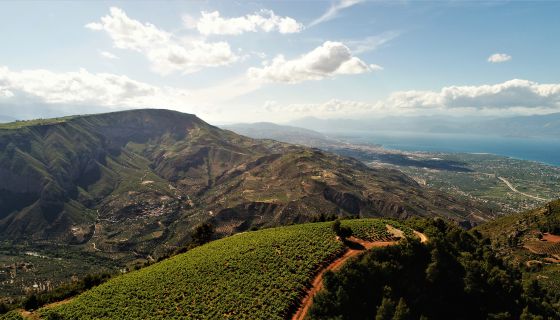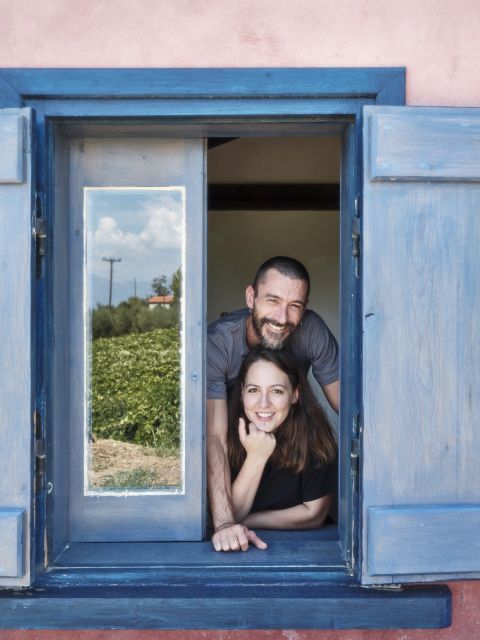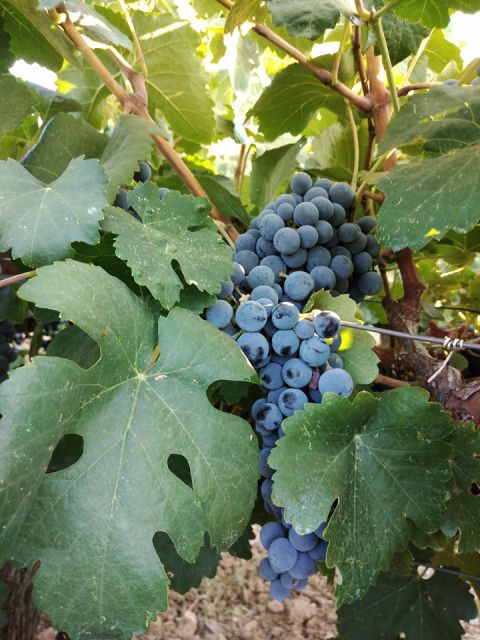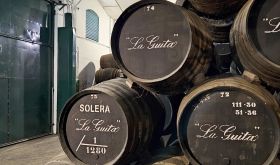From €16.30, $24, £19.99
Sometimes all it takes is a name change to open up a world of new possibilities.
The grape variety named Mavrodaphne was once best known for being the basis of one Greece’s most famous wines, Mavrodaphne of Patras, a sweet wine fashioned after port. For myriad reasons, from fashion to an unfortunate preponderance of Korinthiaki, the Corinth currant grape, in the mix, it’s no longer so sought after. But Theodora Rouvalis and her partner Antonio Ruiz Pañego are proving there’s a much better use for the variety – as a dry red wine.
This turn of fortune isn’t so surprising given the characters involved: Rouvalis is a hallowed name in Greek wine. Angelos Rouvalis was among the first Greek winemakers to train in Bordeaux, and his work in the 1980s on Santorini helped set that island on its path to worldwide recognition. In the early 1990s, he trained his attention on his hometown region, Achaia in the northern Peloponnese, setting up a state-of-the-art gravity-fed winery, Oenoforos, where he worked to revive all the great white grapes that had been forgotten in Mavrodaphne’s wake. His Asprolithi, a crisp white wine made from Roditis, sparked a revolution in Greek whites – a revolution he continued to encourage during his eight-year run as president of the Greek Wine Federation.
Meanwhile, Rouvalis’s daughter, Theodora, watched her dad, studied winemaking in Athens, and then took off for points much further afield – Valencia, Spain; Burgundy’s Clos de Tart; Villa Maria in New Zealand; Ch Margaux in Bordeaux; Muré in Alsace; Gandolini and Ventolera in Chile – before finally deciding to come home to take over the family winery in 2017. She brought with her Ruiz Pañego, a Spanish oenologist, and set about doing what her dad did 20 years earlier: looking at everything with fresh eyes.
That included Mavrodaphne. In Achaia, there has never been much call to do anything with it besides sweet wine, as it’s allowed to appear on a wine label only when it’s PDO Mavrodaphne of Patras, which is by law a fortified sweet wine.
It’s also long been believed to be tricky to work with in this area of the Peloponnese. The grape comes originally from Cephalonia, where it’s used to make the rare Mavrodaphne of Cephalonia, also a PDO-protected sweet wine. But Achaia is one of the most mountainous regions in all of Greece, with peaks rising to 2,355 m (7,727 ft). (See map here.) And its slopes face north, overlooking the Gulf of Corinth. In Aigialeia, where Rouvalis’s vineyards are, snow is abundant enough to support Greece’s second-largest ski resort; summers stay fresh as the mountains shield the region from African winds. Here the grape can struggle to reach full ripeness, and its thick skins hold formidable tannins.
Rouvalis and Ruiz Pañego looked more closely, though, and noted that they have two vastly different plants in their Mavrodaphne vineyards: one called Renio, the other called Tsigello. The two plants have long been thought to be clones, though recent research suggests that they are in fact different cultivars – with Renio, the easier-to-cultivate one, having taken precedence over Tsigello. Rouvalis and Ruiz Pañego decided to vinify them separately, using the same vineyard and same vinification techniques, and the results were overt. With the Tsigello – the variety higher in skin phenolics and anthocyanins – ‘it was love at first sight’, she tells me, citing the wine’s ‘juicy black fruit and herbs’. (Mavrodaphne means ‘black daphne’, and while there’s a romantic story about it having been named for a man’s lover, the name pre-dates the story, suggesting that ‘daphne’ is more likely an allusion to bay laurel, dafni in Greek.)
But how to retain that beautiful scent and deal with those mouth-crushing tannins? They thought back to when they’d lived in Morey-St-Denis, and Ruiz Pañego was working with Frédéric Magnien, who was making gorgeous grand-cru wines vinified in amphorae. They decided to import some of those 160-litre clay jars and see what they might do for Tsigello.
They released their first Tsigello in 2017; since then, they’ve settled on a formula of hand-picked fruit fermented in stainless steel followed by ageing 80–90% of the wine in amphorae, the rest in used barrels. The 2021 redefines Mavrodaphne as an elegant red, translucent as its garnet hue, velvety as the burgundy that inspired it. And yet it’s entirely unlike anything else, with a combination of dark, tart fruit, earthy spice and ethereal herbs all its own. Like the best Greek wines, it begs for food, whether stuffed aubergine or lamb chops cooked over rosemary boughs; it also glides easily right into the cheese plate. At $24/£20, it easily outperforms wines two or three times the price, especially given that it’s likely to age well, too. It is imported into US by VOS Selections and into the UK by Maltby & Greek. Grab it now, before word gets out that Tsigello is where it’s at – although if more people took their cue, it wouldn’t be a bad thing.
For many more Greek wine recommendations, check out our tasting-note database.
All photos are kindly provided by Rouvalis.

















